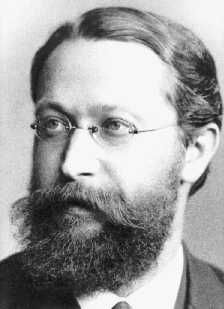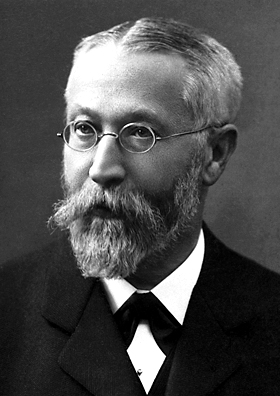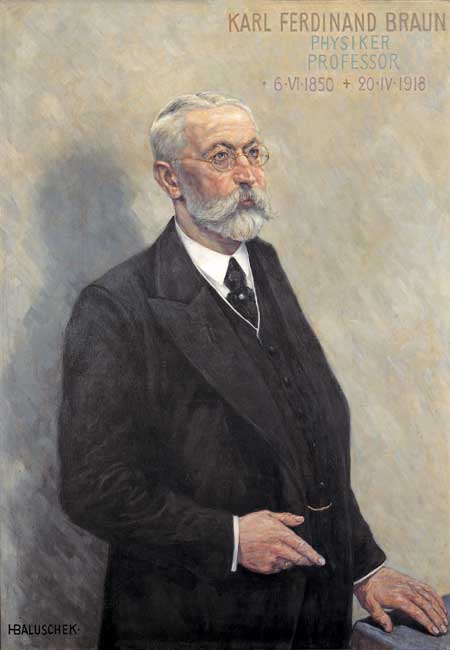<Back to Index>
- Physicist Karl Ferdinand Braun, 1850
- Writer Alexander Sergeyevich Pushkin, 1799
- 1st President of the Executive Council of the Irish Free State William Thomas Cosgrave, 1880
PAGE SPONSOR



Karl Ferdinand Braun (6 June 1850 – 20 April 1918) was a German inventor, physicist and Nobel laureate in physics. Braun contributed significantly to the development of the radio and TV technology: he shared with Guglielmo Marconi the 1909 Nobel Prize in Physics.
Braun was born in Fulda, Germany, and educated at the University of Marburg and received a Ph.D. from the University of Berlin in 1872. In 1874 he discovered that a point - contact semiconductor rectifies alternating current. He became director of the Physical Institute and professor of physics at the University of Strassburg in 1895.
In 1897 he built the first cathode - ray tube (CRT) and cathode ray tube oscilloscope. CRT technology is only now in the 2000s, over a century later, gradually being replaced by flat screen technologies (such as liquid crystal display (LCD), light emitting diode (LED) and plasma displays) on television sets and computer monitors. The CRT is still called the "Braun tube" in German speaking countries (Braunsche Röhre) and in Japan (Buraun - kan).
During the development of radio, he also worked on wireless telegraphy. In 1897 Ferdinand Braun joined the line of wireless pioneers. His major contributions were the introduction of a closed tuned circuit in the generating part of the transmitter, and its separation from the radiating part (the antenna) by means of inductive coupling, and later on the usage of crystals for receiving purposes. Wireless telegraphy claimed Dr. Braun's full attention in 1898, and for many years after that he applied himself almost exclusively to the task of solving its problems. Dr. Braun had written extensively on wireless subjects and was well known through his many contributions to the Electrician and other scientific journals. In 1899, he would apply for the patents, Electro telegraphy by means of condensers and induction colls and Wireless electro transmission of signals over surfaces.
Around 1898, he invented a crystal diode rectifier or Cat's whisker diode. Pioneers working on wireless devices eventually came to a limit of distance they could cover. Connecting the antenna directly to the spark gap produced only a heavily damped pulse train. There were only a few cycles before oscillations ceased. Braun's circuit afforded a much longer sustained oscillation because the energy encountered less losses swinging between coil and Leyden Jars. And by means of inductive antenna coupling the radiator was better matched to the generator. The resultant stronger and less bandwidth consuming signals bridged a much longer distance.
Braun's British patent on tuning was used by Marconi in many of his tuning patents. Guglielmo Marconi used Braun's patents (among others). Marconi would later admit to Braun himself that he had "borrowed" portions of Braun's work. In 1909 Braun shared the Nobel Prize for physics with Marconi for "contributions to the development of wireless telegraphy." The prize awarded to Braun in 1909 depicts this design. Braun experimented at first at the University of Strassbourg. Not before long he bridged a distance of 42 km to the city of Mutzing. In spring 1899 Braun, accompanied by his colleagues Cantor and Zenneck, went to Cuxhaven to continue their experiments at the North Sea. On 24 September 1900 radio telegraphy signals were exchanged regularly with the island of Heligoland over a distance of 62 km. Light vessels in the river Elbe and a coast station at Cuxhaven commenced a regular radio telegraph service.
Braun went to the United States at the beginning of World War I (before the U.S. had entered the war) to help defend the German wireless station at Sayville, New York, against attacks by the British controlled Marconi Corporation. After the US entered the war, Braun was being detained, but could move freely within Brooklyn, New York. Braun died in his house in Brooklyn, before the war ended in 1918.